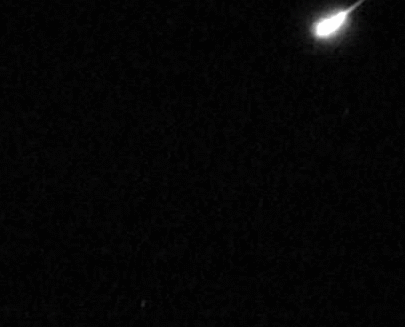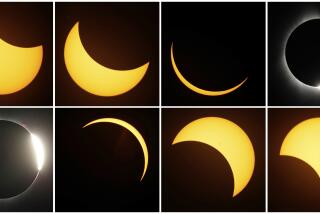Draconids 2013 peak tonight: Lie down, point toes north, cross fingers
The Draconid meteor shower appears each October, and it can produce a big show or a big shrug. Tonight, however, there’s reason for hope.
The Draconids — expected to peak Monday around sunset — occur annually thanks to the ribbon of space dust left behind by Giacobini-Zinner, a comet that travels around the sun every 6½ years. In October, Earth passes through this dust, and as pieces of filament encounter our atmosphere, light streaks through the sky. What’s great about the Draconids is that, although generally more faint, they’re slower-moving meteors, so the light trails linger.
But the Draconids can be lazy. Some years, stargazers notice as few as three or four shooting stars an hour. If Earth hits a thicker cloud of dust, however, there’s a better show.
In 2011, for instance, the peak was 660 meteors per hour. At the time, NASA’s Bill Cooke told the Los Angeles Times: “Most years we just pass through gaps between filaments. ... Occasionally, though, we hit one nearly head on — and the fireworks begin.”
Last year, an outburst of activity was spotted by radar — 1,000 meteors per hour — but stargazers didn’t see much. SpaceWeather.com said visual reports were sparse, suggesting the Draconids were very faint.
For 2013, observers are hoping the stars align — a thick cloud of dust and plenty of activity visible by the human eye.
The moon and planets will set in the southwestern sky at nightfall, EarthSky.com reports, with no waxing crescent moon getting in the way of the display. The site says this year’s Draconids are a good bet for stargazers in middle and far northern latitudes around the globe. Lie down under a dark, open sky with your feet pointed to the north. And give yourself an hour or more to stare skyward. To get you in the mood, here’s a GIF from NASA of a Geminid meteor.

ALSO:
Adult Space Academy: ‘I crashed the space shuttle’
Our communications satellites are under constant attack
A comet takes a dive into an exploding star: Watch its final moments







